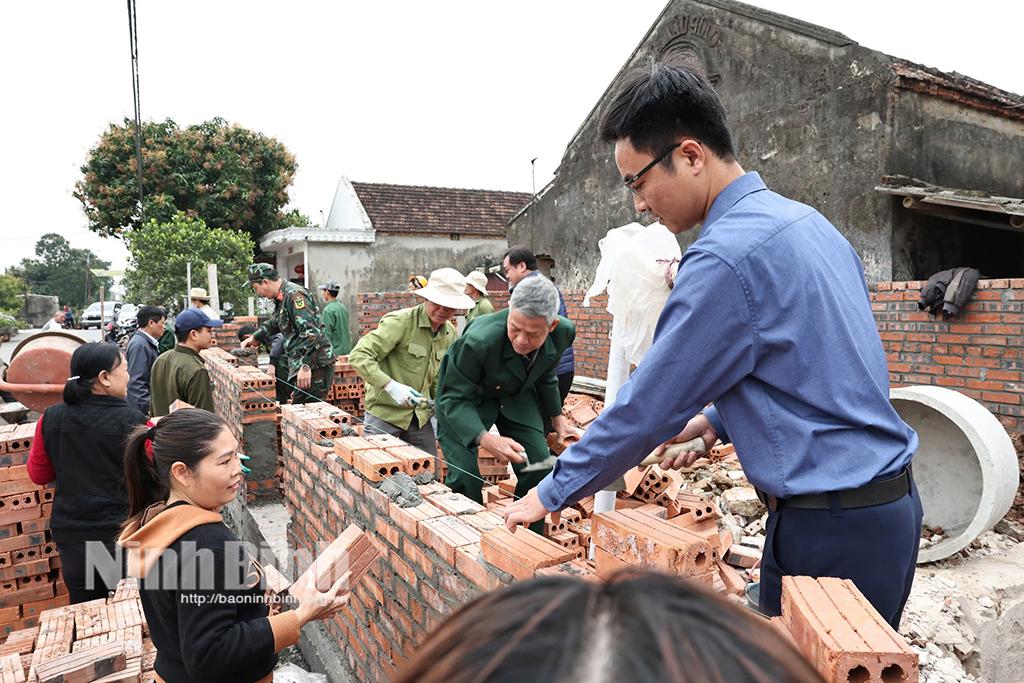“Precious gem” in middle of Hoa Lu ancient capital
The UNESCO Heritage Committee recognised Vietnam’s Trang An Scenic Landscape Complex in Ninh Binh province as a World Cultural and Natural Heritage Site at its 38th meeting in Doha, Qatar, on June 23, 2014.
The are comprises 429 relic sites, including two special national relic sites, 21 national relic sites and 36 provincial sites scattering in 18 communes and wards. It used to be the first capital of the feudal state of Dai Co Viet. It is home to numerous historical relic sites and religious buildings and holds unique natural and cultural values.
In order to implement the commitment and responsibility in managing, preserving and upholding the heritage’s values for future generations under the UNESCO convention, Ninh Binh has issued various documents to steer local sectors, branches and localities to manage, preserve and uphold the Trang An heritage’s values.
Chairman of the Provincial People's Committee Pham Quang Ngoc emphasized that Trang An Heritage is like a "precious gem" that becomes the heart, maintains its heartbeat, rekindles the past, and preserves the precious values of nature and culture. The values of the heritage are an important driving force for the province to develop in the period of renewal and integrate into the heritage network with UNESCO titles. In particular, Trang An is playing a nuclear and central role for Ninh Binh to develop an urban system towards a heritage city. Up to now, after 10 years of being recognised as a World Heritage Site, the management, conservation, exploitation and promotion of the values of Trang An have achieved many good results.
The outstanding global values of heritage are respected and preserved. The community of people living in the heritage area have joined hands in protecting the heritage and benefited directly from the heritage.
"Ninh Binh with the goal of building a millennium heritage city and a creative city, Trang An is carrying a new mission, becoming the centre of a millennium heritage city, thereby promoting the province’s tourism development," Ngoc stressed.
Trang An in the center of millennium heritage city
On August 23, 2023, the provincial Party Committee issued Resolution 16-NQ/TU on the arrangement of district and commune-level administrative units for the period of 2023 – 2030. Under the resolution, the province will merge Ninh Binh city and Hoa Lu district in 2025, and at the same time arrange the affiliated commune-level administrative units, associated with shaping the nature of the new administrative unit after the merger as "Ancient Capital – Heritage City", based on unique natural - ecological, cultural - historical values.
To develop Trang An as a heritage urban center, Ninh Binh always focuses on preserving natural landscapes, historical relics, delineating prohibited areas and temporarily banning exploitation of limestone mountains and special-use forests, and at the same time shifting the economic development strategy from "brown" to "green". The province flexibly applies the public-private partnership model, ensuring harmonious benefits between parties: Community (people) - government - businesses.
According to the provincial Master Planning for the period of 2021 - 2030, with a vision to 2050, there will be seven central urban areas; of which one tier-1 urban area is a millennium heritage city.
Deputy Minister of Construction Nguyen Tuong Van emphasized that in the Red River Delta region, large cities such as Hanoi, Quang Ninh, and Hai Phong are often talked about, while Ninh Binh is rarely mentioned. However, when approaching from a heritage perspective, Ninh Binh has outstanding opportunities, competitive advantages, and unique potential. The heritage is the driving force and new potential for Ninh Binh to develop urban areas.
Meanwhile, Deputy Minister of Culture, Sports and Tourism Hoang Dao Cuong said that the basis for Ninh Binh to build a heritage-tourism city is because the province possesses unique natural resources and heritage.
To develop Ninh Binh into a major center with high brand value in tourism, cultural industry, and heritage economy of the whole country and the Asia-Pacific region, along with implementing Resolution 16/TU of the provincial Party Committee, the establishment of a heritage - tourism city project is very important, creating a strategic framework, foundation and basis, with core values for the province to gradually advance forward and develop sustainably.
